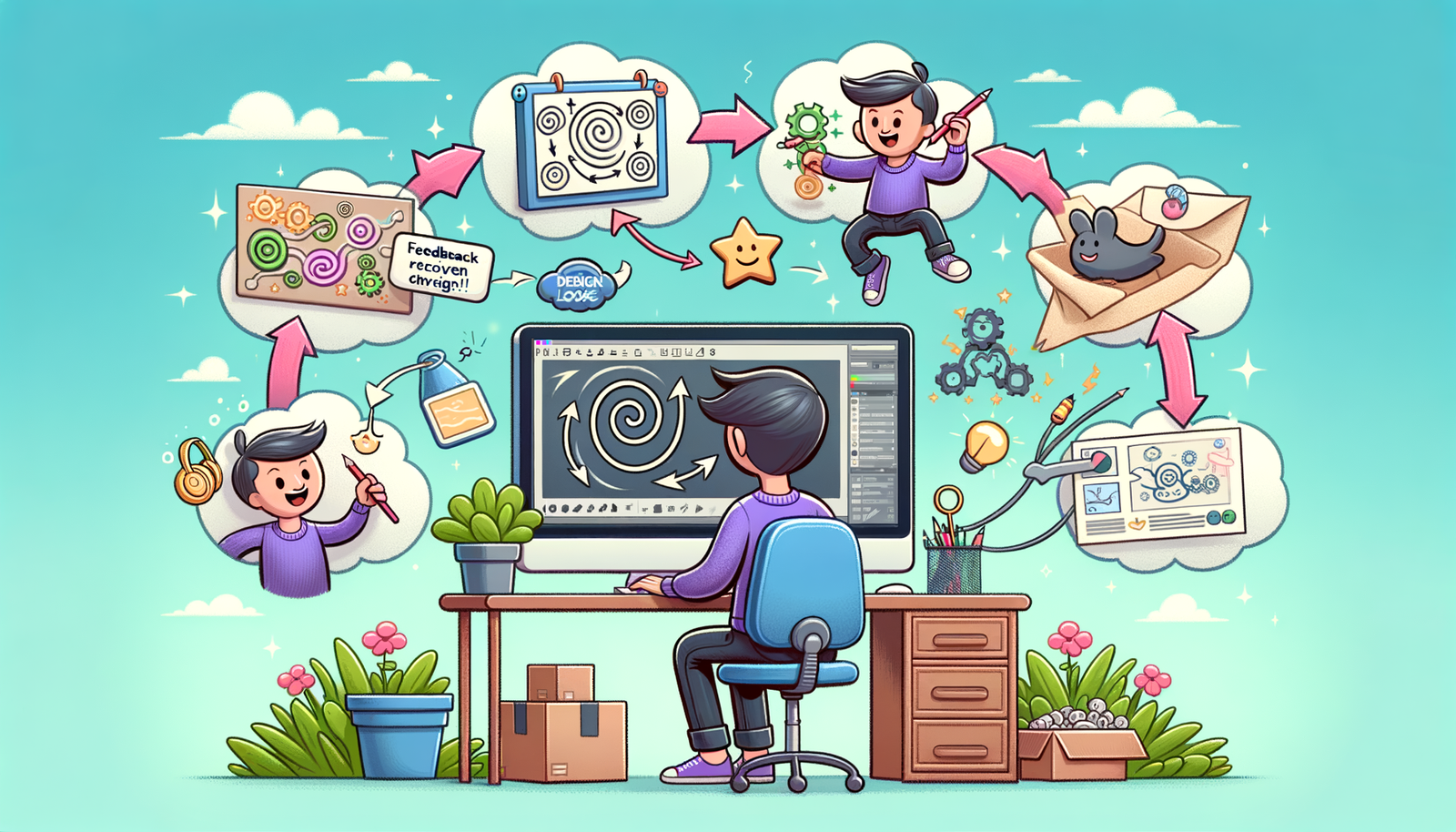Your Cart is Empty
Customer Testimonials
-
"Great customer service. The folks at Novedge were super helpful in navigating a somewhat complicated order including software upgrades and serial numbers in various stages of inactivity. They were friendly and helpful throughout the process.."
Ruben Ruckmark
"Quick & very helpful. We have been using Novedge for years and are very happy with their quick service when we need to make a purchase and excellent support resolving any issues."
Will Woodson
"Scott is the best. He reminds me about subscriptions dates, guides me in the correct direction for updates. He always responds promptly to me. He is literally the reason I continue to work with Novedge and will do so in the future."
Edward Mchugh
"Calvin Lok is “the man”. After my purchase of Sketchup 2021, he called me and provided step-by-step instructions to ease me through difficulties I was having with the setup of my new software."
Mike Borzage
Leveraging Iterative Design and Feedback Loops in Design Software for Enhanced Product Development
June 24, 2024 3 min read


Introduction: Understanding Iterative Design and Feedback Loops
Iterative design processes represent a methodological approach for enhancing and refining a design through continuous testing and feedback. This approach allows designers to make incremental adjustments based on real-world use and user interactions. Central to iterative design is the concept of feedback loops, mechanisms through which information about the success of a design is collected, analyzed, and used to inform subsequent iterations. These loops are pivotal in ensuring that a product evolves to meet the needs of its users, fostering innovation and efficiency in product development.
The Mechanism of Feedback Loops in Design Software
In the realm of design software, feedback loops are integrated into the workflow to facilitate continuous improvement and refinement of models. These mechanisms can take various forms, including:
- User feedback, which involves gathering insights and reactions from real-world users to guide design modifications.
- Automated testing, which includes running simulations to predict how a design will perform under specific conditions.
- Real-time analytics, which provide immediate data on how a design is being interacted with, allowing for agile adjustments.
Furthermore, simulation and prototyping tools play a crucial role in generating actionable feedback by allowing designers to visualize and test their ideas in a controlled environment before they are fully realized.
Enhancing Design Quality through Iterative Processes and Feedback
Implementing feedback loops within the design process can significantly enhance the quality and functionality of the final product. Through careful analysis and application of user input and automated test results, designers are able to:
- Refine their designs to better meet user needs and expectations.
- Identify and correct errors at an early stage, reducing the need for costly revisions down the line.
- Improve the efficiency of the design process by focusing on areas that require adjustment.
While specific examples vary, the overall impact of continuous feedback is a shorter development cycle and a higher quality product.
Challenges and Best Practices in Implementing Feedback Loops
Despite the clear benefits, integrating effective feedback loops into design processes can present various challenges. These may include difficulties in collecting comprehensive feedback, analyzing large volumes of data, and integrating findings into existing workflows. To overcome these obstacles, several strategies can be employed:
- Establishing clear channels for feedback collection and ensuring that all team members are engaged in the process.
- Utilizing advanced analytics and data processing tools to efficiently analyze feedback.
- Developing a culture that values continuous improvement and is open to change based on feedback.
In addition to these strategies, staying abreast of future trends in design software, such as the integration of artificial intelligence and machine learning for better feedback analysis, can further enhance feedback mechanisms.
Conclusion: The Critical Role of Feedback in Evolving Design Practices
In conclusion, feedback loops play an indispensable role in the iterative design process, ensuring that products not only meet but exceed user expectations. The ability to rapidly incorporate feedback into design iterations represents a powerful tool for innovation, efficiency, and continuous improvement. As technology advances, the methods by which feedback is collected, analyzed, and applied will continue to evolve, further solidifying its role in the future of design practices. Embracing these changes and the challenges they bring will be key to leveraging the full potential of feedback loops in the enhancement of design quality and the development of successful products.
Also in Design News

Design Software History: Visualizing Engineering Intent: Feature Histories, Constraints, and Semantic PMI in CAD
December 29, 2025 16 min read
Read More
Sim-to-Real Transfer for Closed-Loop Process Calibration and Control
December 29, 2025 12 min read
Read MoreSubscribe
Sign up to get the latest on sales, new releases and more …



